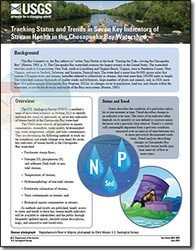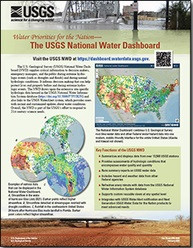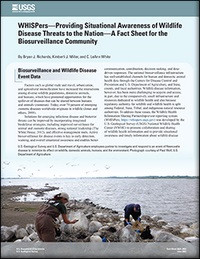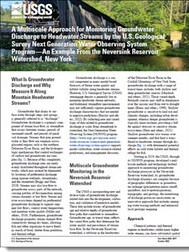
Product Details
- Product Number
- 534322
- Series
- FS-2023-3003
- Scale
- NO SCALE
- Alternate ID
- FS-2023-3003
- Authors
- CHRIS A MASON
- Version Date
- 06/01/2023
- Countries
- USA
- Media
- WEB ONLY
- Format
- WEB ONLY
Additional Details
- Description
-
Tracking Status and Trends in Seven Key Indicators of Stream Health in the Chesapeake Bay Watershed
Fact Sheet 2023-3003
National Cooperative Geologic Mapping Program
By: Samuel H. Austin, Matt J. Cashman, John Clune, James E. Colgin, Rosemary M. Fanelli, Kevin P. Krause, Emily H. Majcher, Kelly O. Maloney , Chris A. Mason, Doug L. Moyer, and Tammy M. Zimmerman
https://doi.org/10.3133/fs20233003
This product is not available for order, it can only be downloaded from here (click on image) or within the Publications Warehouse at https://pubs.usgs.gov/publication/fs20233003
For additional information, contact:
Director, Virginia and West Virginia Water Science Center
https://www.usgs.gov/programs/national-cooperative-geologic-mapping-prog ram
https://www.usgs.gov/centers/va-wv-water
U.S. Geological Survey
1730 East Parham Road
Richmond, Virginia 23228
Abstract
“The Bay Connects us, the Bay reflects us” writes Tom Horton in the book“Turning the Tide—Saving the Chesapeake Bay”. The Chesapeake Bay watershed contains the largest estuary in the United States. The watershed stretches north to Cooperstown, New York, south to Lynchburg and Virginia Beach, Virginia, west to Pendleton County, West Virginia, and east to Seaford, Delaware, and Scranton, Pennsylvania. The watershed is more than 64,000 square miles that contain 150 major rivers and streams, hereafter referred to collectively as streams, that total more than 100,000 miles in length. The watershed contains thousands of smaller creeks and tributaries, large numbers of plants and animals, and, in 2020, more than 18.4 million people. As changes occur in population, land use, and climate within the watershed, so too do the diversity and health of the Bay's ecosystems.
- Survey Date
- 2023
- Print Date
- 2023
- Height In Inches
- 11.000
- Length In Inches
- 8.500
- Languages
- English





